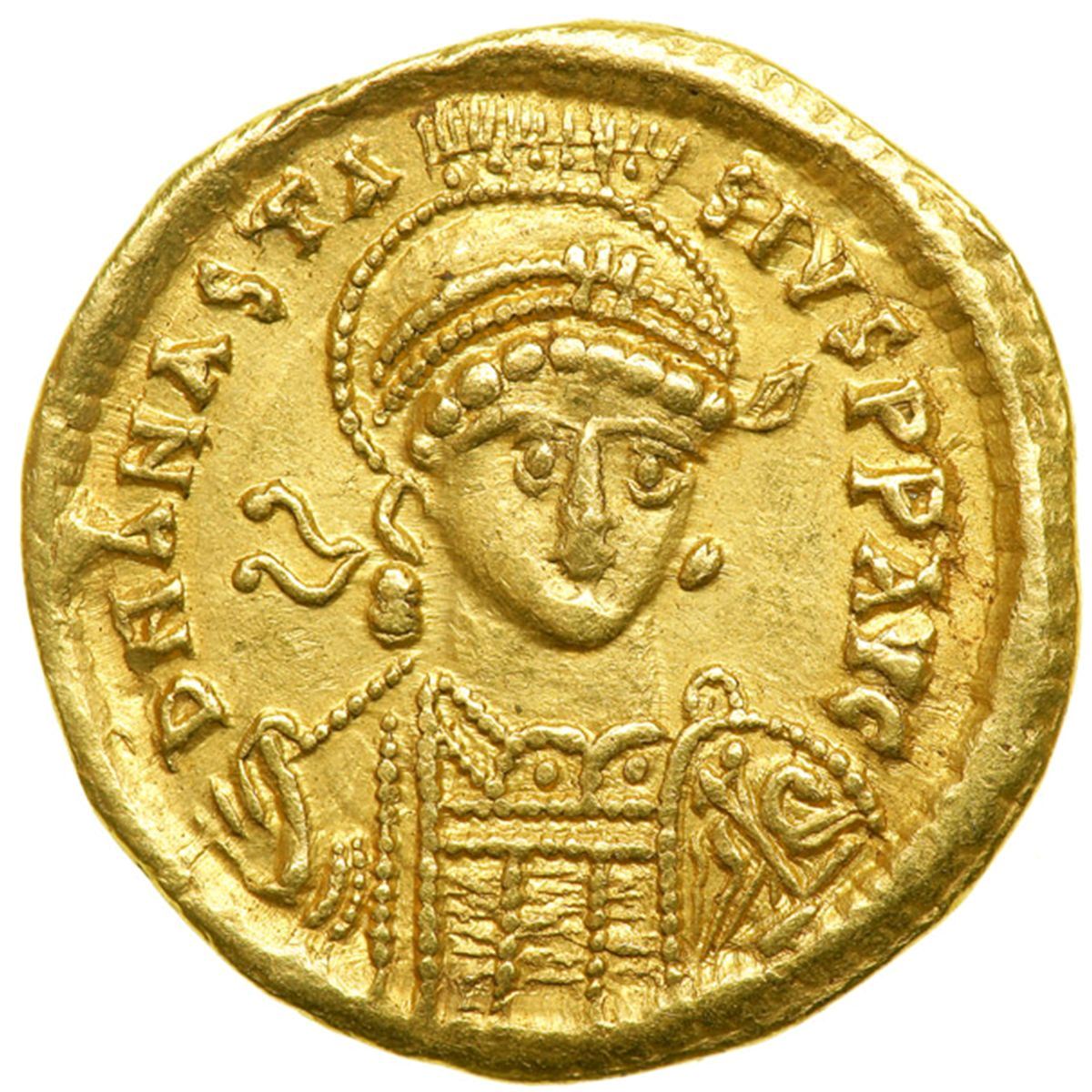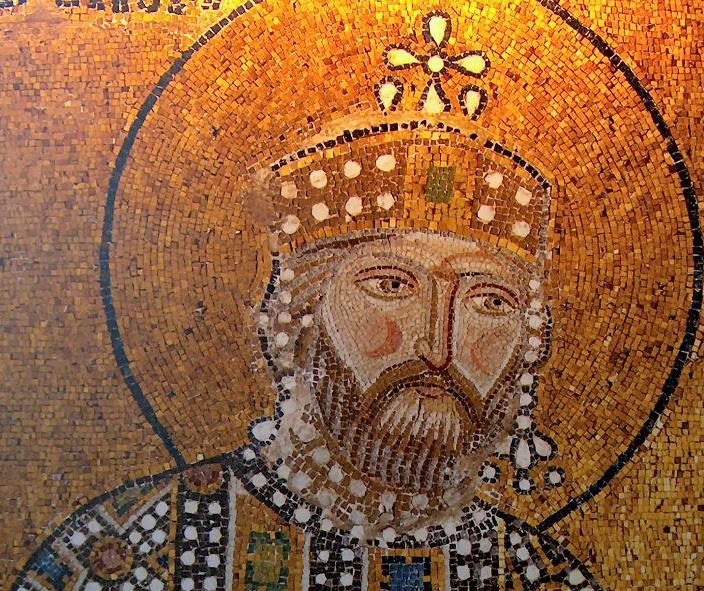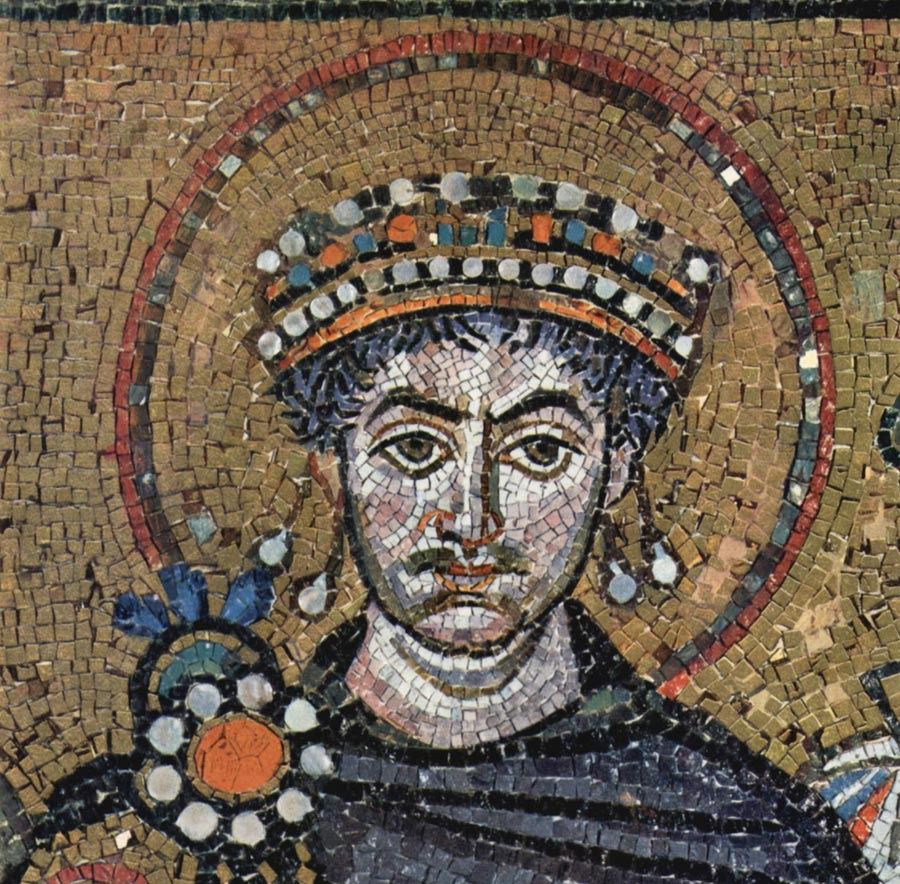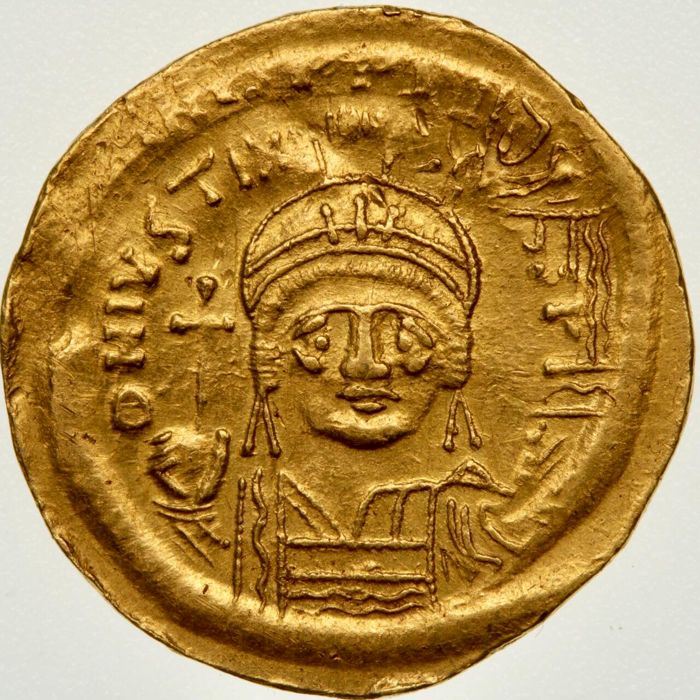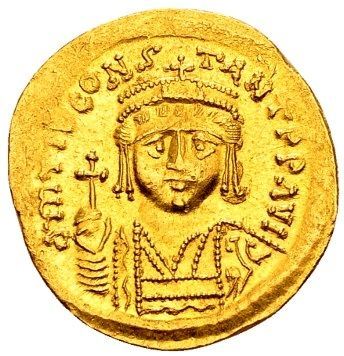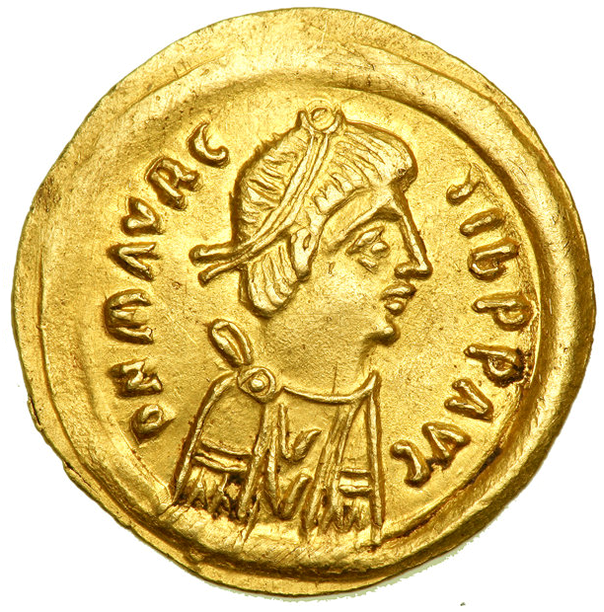While the transition from Roman to Byzantine is gradual and somewhat fluid when it comes to political criteria, it is pretty clearly defined numismatically; In 491 Anastasius I became Emperor, and in 498 AD he introduced a monetary reform.
The new system involved three denominations of gold (the solidus and its half and third) and five of copper – the follis, worth 40 nummi, and its fractions worth 20, 10, 5 and 1 nummus. The obverses featured a highly stylized portrait, while the reverse featured the value in Greek numerals; M=40, K=20, I=10, E=5.
Politically this period covers Anastasius and the Justinian Dynasty, and was characterized by efforts to reclaim lost territory – North Africa, Illyria, southern Spain, and Italy. The last Justinian emperor – Maurice – managed to make himself unpopular enough to trigger a revolt which cost him his life in 602 AD, and triggered a series of cataclysmic events which would undo the progress of the last century.
The new system involved three denominations of gold (the solidus and its half and third) and five of copper – the follis, worth 40 nummi, and its fractions worth 20, 10, 5 and 1 nummus. The obverses featured a highly stylized portrait, while the reverse featured the value in Greek numerals; M=40, K=20, I=10, E=5.
Politically this period covers Anastasius and the Justinian Dynasty, and was characterized by efforts to reclaim lost territory – North Africa, Illyria, southern Spain, and Italy. The last Justinian emperor – Maurice – managed to make himself unpopular enough to trigger a revolt which cost him his life in 602 AD, and triggered a series of cataclysmic events which would undo the progress of the last century.
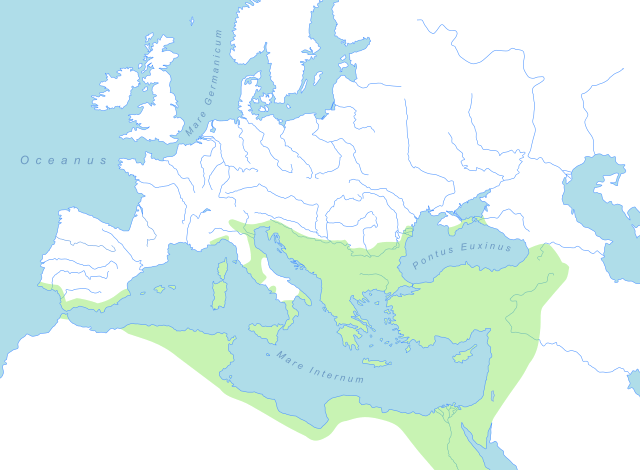
Anastasius I was Byzantine emperor from 491 to 518. He was born at Dyrrachium, into a noble Illyrian family, and rose to become a very successful financial administrator under several emperors.
Following the death of Zeno in 491, there is strong evidence that many Roman citizens wanted both a Roman and an Orthodox Christian emperor. In the weeks following Zeno's death, crowds gathered i...
Following the death of Zeno in 491, there is strong evidence that many Roman citizens wanted both a Roman and an Orthodox Christian emperor. In the weeks following Zeno's death, crowds gathered i...
Flavius Iustinus Augustus was Byzantine emperor from 518 to 527. He rose through the ranks of the army and ultimately became Emperor, in spite of the fact he was illiterate and almost 70 years old at the time of accession.
His reign is noteworthy for the resolution of the Acacian Schism between the eastern and western branches of the Christian church. This temporary eastern deferral to ...
His reign is noteworthy for the resolution of the Acacian Schism between the eastern and western branches of the Christian church. This temporary eastern deferral to ...
Flavius Petrus Sabbatius Iustinianus Augustus - traditionally known as Justinian the Great - was Byzantine emperor from 527 to 565. His reign was marked by the ambitious but only partly realized renovatio imperii, or "restoration of the Empire".
A still more resonant aspect of his legacy was the uniform rewriting of Roman law, the Corpus Juris Civilis, which is still the basis of...
A still more resonant aspect of his legacy was the uniform rewriting of Roman law, the Corpus Juris Civilis, which is still the basis of...
Flavius Iustinus Iunior Augustus was Byzantine emperor from 565 to 574. He was the husband of Sophia, nephew of Justinian I and the Empress Theodora, and was therefore a member of the Justinian Dynasty.
Justin II's reign was marked by war with the Sassanid Empire and the loss of the greater part of Italy. Proud of character, and faced with an empty treasury, he discontinued Justinian's...
Justin II's reign was marked by war with the Sassanid Empire and the loss of the greater part of Italy. Proud of character, and faced with an empty treasury, he discontinued Justinian's...
Flavius Tiberius Constantinus Augustus was Byzantine emperor from 574 to 582. He was close friends with his predecessor Justin II, and was eventually adopted by him as his son and heir.
On 26 September 578, Tiberius was made Augustus by the rapidly-failing Justin. He used that opportunity to give away 7,200 pounds of gold, a practice that he continued annually throughout the four years ...
On 26 September 578, Tiberius was made Augustus by the rapidly-failing Justin. He used that opportunity to give away 7,200 pounds of gold, a practice that he continued annually throughout the four years ...
Flavius Mauricius Tiberius Augustus was Byzantine Emperor from 582 to 602. He was the son-in-law of his predecessor, Tiberius II.
His reign was troubled by financial difficulties and almost constant warfare; while he ended the war with Sasanian Persia with a victory and the cessation of two centuries of tribute, he fought extensively in the Balkans against the Avars and in Italy against...
His reign was troubled by financial difficulties and almost constant warfare; while he ended the war with Sasanian Persia with a victory and the cessation of two centuries of tribute, he fought extensively in the Balkans against the Avars and in Italy against...

